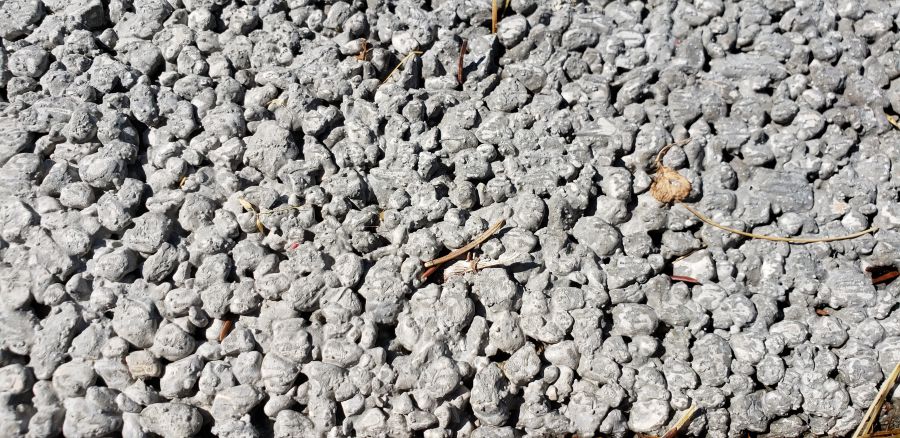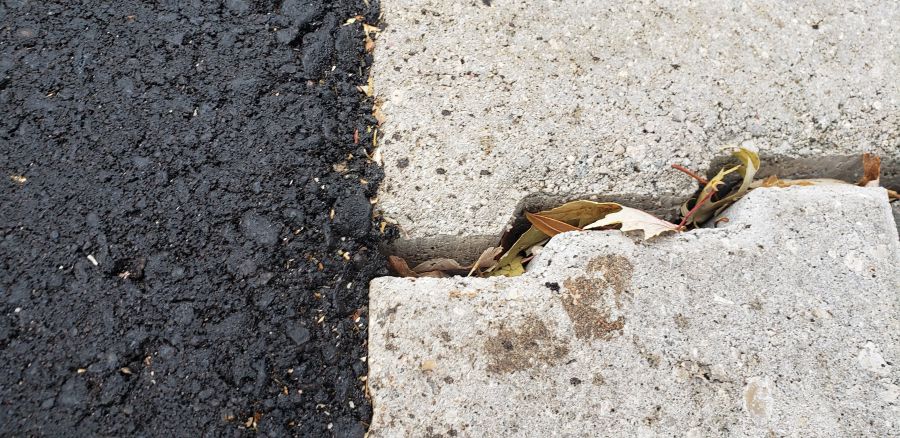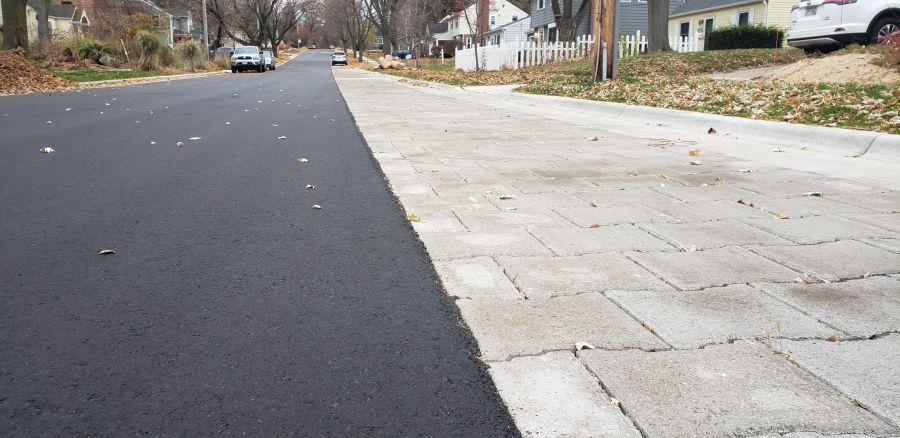Permeable Pavement
Permeable pavement is an example of "Green Infrastructure" which the United States Environmental Protection Agency defines as a number of options when building, that use plant or soil systems, permeable pavement or other permeable surfaces to collect stormwater and reduce the amount of stormwater flowing into the sewer systems or to surface waters.
Permeable pavement is one type of pavement that allows stormwater to soak into the ground versus flowing down the street. It includes, permeable concrete poured in place, precast permeable concrete, permeable asphalt and interlocking pavers.

While there are many types of permeable pavement, they all give stormwater an immediate place to enter the ground vs., for example, flowing down a driveway, along a curb in to the gutter or end body of water. They require extra care during installation to ensure the surface is properly supported and that the soils below the pavement can allow water to soak away. Compared to other green infrastructure options, permeable surfaces can be expensive, however, they are the only green infrastructure option that can be driven on.

In the City of Madison, permeable pavement is not a widely-used option yet, but the City of Madison Engineering Division is experimenting with reimbursement programs and the benefits of permeable pavement in some neighborhoods, such as the Westmoreland neighborhood through its Green Infrastructure Study.
City Engineering is also working with the USGS on a test site off of Sycamore Avenue. Read more about the USGS study.
Benefits of permeable pavement
- Distributed infiltration less prone to failure
- Reduces the size of downstream pipes and channels
- Fits into the existing Right of Way
- Captures sediment and phosphorus

Learn about other green infrastructure options on the Green Infrastructure Study page or the Roger Bannerman Rain Garden section of the Engineering website.
Examples of permeable pavement in the City of Madison include:
- St. Clair St. (5.5’ wide section on north side of street) between Toepfer and Glen/Glenway) This has PaveDrain and precast concrete. There are also precast sidewalk panels between the driveways and the driveway aprons of some addresses.
- Euclid ave. (5.5' wide section on south side of street ) between Holly ave and Toepfer Ave. This location has pave drain and precast concrete.
- Permeable Alley between Randall and orchard street which includes the southern portion of alley, about four homes in from Orchard Street.
- Monroe Plaza (Monroe and Regent) between the drinking fountain and the rain garden.
